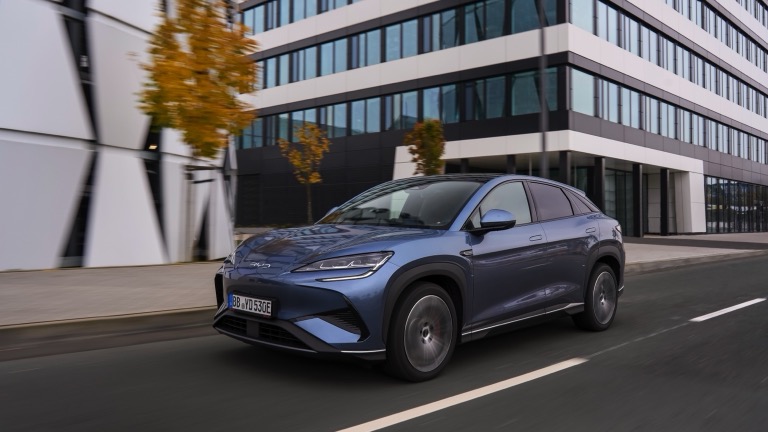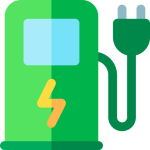
The “free ride” for electric vehicle drivers is nearing an end, with Treasurer Jim Chalmers and state governments accelerating plans for a national road-user charge to replace shrinking fuel excise revenue. High-level talks between federal and state treasurers, industry leaders and policy experts are under way ahead of next week’s economic roundtable in Canberra, with a focus on how to design a fair, workable model that ensures EV owners contribute to road funding.
Why the shift is happening
For decades, fuel excise-currently 51.6 cents per litre-has been a key funding source for transport infrastructure. Petrol and diesel drivers effectively contribute at the bowser, costing a typical household more than $1200 a year. EV owners, by contrast, pay no fuel excise. As more Australians adopt hybrid and electric options and internal combustion engines become more efficient, excise revenue is falling. The federal government collected an estimated $15.71 billion in net fuel excise in 2023-24, with $67.6 billion forecast over the four years to 2026-27. The 2024 federal budget also pointed to a $470 million decline in receipts over four years from 2024-25.
The Productivity Commission has urged action, arguing that charging users more directly for roads sends clearer price signals and promotes more efficient use of infrastructure.
What a new charge could look like
A distance-based model remains the most likely, with New South Wales shaping up as a template. On NSW assumptions, an average EV driver could pay roughly $300-$400 a year, depending on mileage. NSW officials have projected $73 million in revenue from a road-user charge in 2027-28, rising to $141 million the following year. Plug-in hybrids would contribute at a fixed 80 per cent of the full EV rate, reflecting their partial reliance on electricity.
Western Australia has also flagged an intention to implement a road-user charge. In Victoria, however, an EV levy was struck down after a High Court ruling found it invalid on constitutional grounds, prompting the scheme’s repeal. South Australia’s previous plan was delayed amid public backlash and ultimately repealed.
Who’s in the room
The Infrastructure Partnerships Australia road-user charging forum in Sydney has brought together senior officials from the NSW and Victorian treasuries, the Productivity Commission, Transurban chief executive Michelle Jablko and Australian Automobile Association managing director Michael Bradley. The AAA supports a national, distance-based approach-on the proviso that revenue is earmarked for road upgrades.
The Treasurer’s position
Jim Chalmers has made clear he wants a durable, nationally coordinated system. “We will also continue to work with states and territories on the future of road-user charging,” he said in June, noting the complexity of the reform. Business leaders were briefed earlier this year that the government is considering options well ahead of the next election.
The fairness and road wear debate
Victorian Treasurer Tim Pallas argues EVs, on average, are heavier and therefore can impose greater wear on roads than many internal combustion vehicles. “So getting that balance right was key to us,” he said, adding that the charge should sit at about half the equivalent cost of fuel excise when incentives for low-emissions vehicles are considered. Policymakers are seeking to balance revenue certainty, equity across vehicle types and environmental goals.
Legal and constitutional constraints
Design matters. While some experts advocate a “gold standard” variable rate that accounts for vehicle mass, distance, location and time of day, the Commonwealth faces constitutional limits on imposing taxes that discriminate between states or parts of states. States could theoretically implement more granular models, but recent legal challenges highlight the complexity of doing so without federal harmonisation.
How fuel excise currently works
- Rate: 51.6 cents per litre on petrol and diesel.
- Who pays: Drivers of internal combustion vehicles at the bowser; EVs do not.
- Where it goes: Collected by the Commonwealth. Registration and licence fees are paid to states and territories.
- The problem: Efficiency gains and EV adoption are eroding the base, widening a budget gap for road maintenance and upgrades.
Where the policy conversation is heading
- National consistency: A single, harmonised framework is the goal to avoid a patchwork of state systems.
- Distance-based charging: Favoured by the AAA and modelled by NSW as the most equitable approach.
- Transitional design: Policymakers are weighing how to introduce charges without undermining EV uptake.
- Accountability: Several stakeholders want revenue clearly tied to road funding.
What it means for EV owners today
No immediate changes apply until legislation is passed. Costs will depend on the final design-likely distance-based-with plug-in hybrids treated separately. How kilometres are recorded remains under discussion; options flagged in past debates include odometer declarations and digital reporting systems. Privacy, compliance and administrative cost are central to the design work now underway.
Key takeaways
- The federal and state governments are fast-tracking a road-user charge for EVs to shore up road funding.
- A distance-based model is in focus, with indicative costs of around $300-$400 annually for an average driver under NSW-style settings.
- Legal and constitutional constraints mean a nationally coordinated approach is considered essential.
- Stakeholders, including the AAA and the Productivity Commission, support reforms that are fair, transparent and linked to road outcomes.
Conclusion
Australia is moving from a fuel-based funding model to a use-based one as the vehicle fleet electrifies. The policy challenge is to deliver a system that is fair, simple and durable, while preserving momentum toward lower-emissions transport. With treasurers and industry leaders at the table, the contours of a national road-user charge are coming into view. The details-what is charged, how it is measured and where the money goes-will determine whether the reform wins public confidence and delivers the roads Australians rely on.
Frequently asked questions
What is a road-user charge?
A fee paid by motorists based on how much they use the road network-most likely measured in kilometres travelled-rather than how much fuel they buy.
Why introduce it now?
Fuel excise revenue is declining as cars become more efficient and more drivers switch to EVs. Governments need a replacement to fund road maintenance and upgrades.
How much might EV drivers pay?
On NSW-style settings, an average EV driver could expect roughly $300-$400 per year, depending on annual kilometres driven. Final figures will depend on the national design.
Will plug-in hybrids be included?
Yes. NSW has proposed plug-in hybrids pay 80 per cent of the full EV charge to reflect their partial use of electricity.
When could the charge start?
NSW plans to introduce a charge from 2027 or when EVs reach 30 per cent of new car sales, whichever comes first. A national timeline will depend on federal-state agreement and legislation.
How will distance be recorded?
Options under discussion include odometer declarations and digital reporting systems. Privacy, accuracy and administrative simplicity are key considerations.
Will revenue be dedicated to roads?
The Australian Automobile Association supports a national scheme on the condition that revenue is earmarked for road infrastructure. Whether funds are hypothecated will be a central policy decision.
Is a heavier EV really harder on roads?
Vehicle mass is one factor in road wear. Policymakers are considering whether and how weight should be reflected in any charging model while maintaining EV adoption incentives.
Could charges vary by location or time of day?
Some experts argue for variable pricing by mass, distance, location and time. However, constitutional limits and administrative complexity make a simple, nationally consistent model more likely in the near term.
What happens next?
Treasurers and industry experts are meeting ahead of the economic roundtable in Canberra to refine options. Expect further consultation, draft proposals and, ultimately, legislation before any scheme takes effect.
About EV Evolution
EV Evolution is the leading online platform dedicated to Australian electric vehicle owners and enthusiasts. We foster a vibrant community, delivering essential EV news and insights, and enhancing user engagement through our innovative, AI-powered chatbot for dynamic discussions. Our mission is to empower Australian electric vehicle owners and enthusiasts by fostering a vibrant, AI-driven online community that connects, informs, and advances the nation’s electric vehicle landscape.




